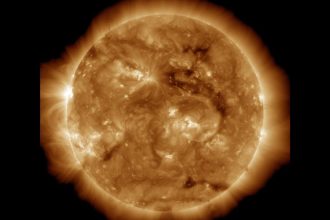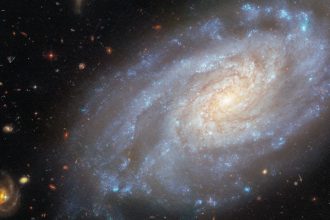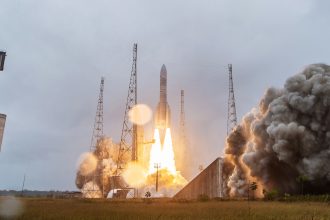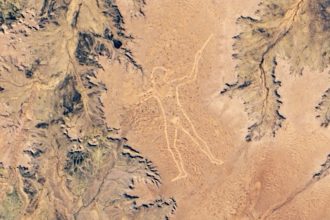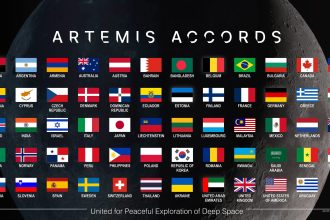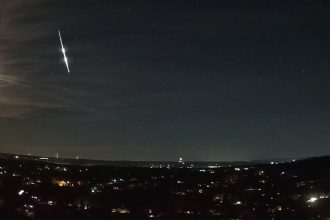
The interstellar invader Comet 3I/ATLAS is continuing to surprise scientists, this time by brightening at an unexpectedly rapid pace as it made its closest approach to the sun. Experts studying the object don’t yet know why that happened.
3I/ATLAS is only the third object known to have entered our solar system from another planetary system — after the cigar-shaped space-rock ‘Oumuamua, discovered passing through the solar system in Oct. 2017, and the first interstellar comet 2I/Borisov, spotted in our stellar backyard in August 2019. The brief presence of these bodies in the solar system offers a unique glimpse into the chemical makeup around other stars.
You may like
“The reason for 3I’s rapid brightening, which far exceeds the brightening rate of most Oort cloud comets at similar r [radial distance], remains unclear,” the scientists behind the research, Qicheng Zhang of Lowell Observatory in Flagstaff, Arizona, and Karl Battams, an astrophysicist at the Naval Research Laboratory (NRL) in Washington DC, write in a paper discussing the observation published on the research repository site arXiv.
The rapid brightening of 3I/ATLAS was observed by STEREO-A and STEREO-B, the twin spacecraft that make up Solar Terrestrial Relations Observatory (STEREO), by the sun observing Solar and Heliospheric Observatory (SOHO), and the weather satellite GOES-19. The space-based observations were necessary because ground-based instruments won’t be able to observe the interstellar comet again until it passes out from the other side of the sun into its “postperihelion” phase, escaping the glare of starlight in mid- to late-November 2025.
The team proposes a few different mechanisms that could account for the unexpectedly rapid brightening of this comet from beyond the solar system. It could be the result of the speed at which 3I/ATLAS is approaching the sun; alternatively, it could tell scientists something about the comet itself. That is exciting because if the internal composition of 3I/ATLAS is different from that of the nuclei of Oort cloud comets, it could mean that the planetary system from which it originates also has a different chemical makeup.
“Oddities in nucleus properties like composition, shape, or structure — which might have been acquired from its host system or over its long interstellar journey — may likewise contribute [to the rapid brightening],” Zhan and Battams continued. “Without an established physical explanation, the outlook for 3I’s postperihelion behavior remains uncertain, and a plateau in brightness — or even a brief continuation of its preperihelion brightening — appears as plausible as rapid fading past perihelion.”
The authors also suggest that sublimation could be occurring differently than expected for 3I/ATLAS because the interstellar comet was still dominated by the sublimation of carbon dioxide at an unusually close distance from the sun, around three times the distance between Earth and our star. This may have resulted in cooling that had until now suppressed the sublimation of water ice to steam.
Clearly, 3I/ATLAS continues to baffle and intrigue scientists in equal measure, and it is a fairly certain bet that once it escapes the glare of the sun, we will discover even more curiosities surrounding this interstellar intruder.
“Continued observations may help provide a more definitive explanation for the comet’s behavior,” the duo of scientists concluded.
A paper about these results can be viewed on the pre-print repository arxiv.





